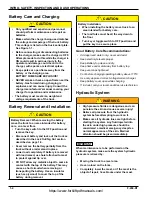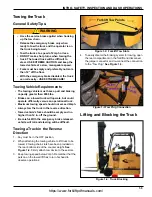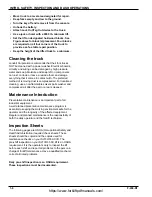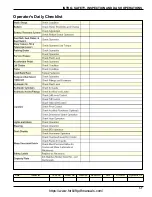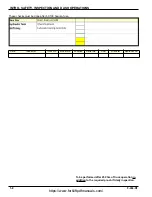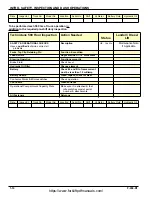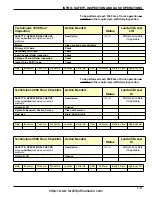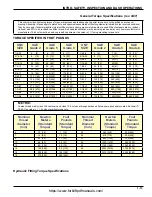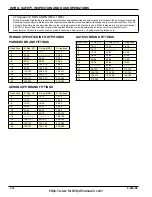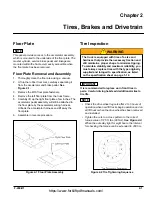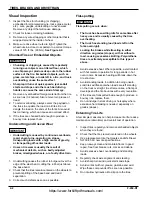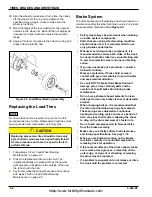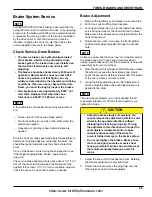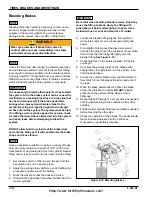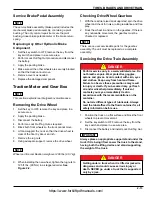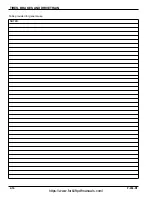
2-4
F-459-R1
TIRES, BRAKES AND DRIVETRAIN
20. Spin the wheel to make sure it turns free, then back
off the wheel nut 1/2 turn and re-tighten to the
specified torque. Again, check to make sure the
wheel turns freely.
21. Bend the tangs of the lock washer into the nearest
notches in the wheel nut. Back-off the nut slightly as
necessary to align it with the nearest lock washer
tangs.
22. Apply a thin layer of grease to the hub cap o-ring and
press hub cap into the hub.
Figure 2-3 Load Wheel Bearing Assembly
Replacing the Load Tires
NOTE
Front load tires must be replaced in pairs, but do this
procedure one tire at a time. Replacement load tires must
have same size and composition as factory tires.
CAUTION
1.
Follow steps 1-8 on “Load Wheel Bearing
Maintenance” on page 2-3.
2.
Press the replacement tire onto the hub. The
replaced load tires get pressed off as the new tire
gets pressed on. Make sure the outside of the new
tire is flush with the hub.
3.
Pack outer wheel bearing with grease and continue
with steps 19-23 on “Load Wheel Bearing
Maintenance” on page 2-3.
Brake System
The drum brakes are self-adjusting and should require no
maintenance after the initial technician setup. For typical
brake assembly illustration, See Figure 2-4.
• Safety must always be paramount when working
on brake system components.
• Parts that are not in perfect working condition
should not be used. It is recommended to use
only genuine Landoll parts.
• Whenever servicing a brake component, it is
recommended to service both sides of the truck
to ensure that both sides have equal braking and
to prevent premature wear and uneven braking
action.
• If you are unsure about a procedure, consult a
trained technician.
• Wear eye protection. If brake fluid comes in
contact with eyes, immediately rinse with water
and seek medical attention.
• Use only DOT #3 brake fluid. Brake fluid will
damage paint. Cover all body parts and be
careful not to spill brake fluid during brake
maintenance.
• Do not use petroleum based solvents to clean
brake parts. Use only brake cleaner or denatured
alcohol.
• When changing brakes, it is recommended that
the return and hold-down springs be replaced.
These springs are subjected to continuous
heating and cooling cycles and over a period of
time, may lose their tension, allowing the shoes
to drag on the drum and wear at a faster rate.
• Do not used compressed air to blow particles
from the brake assembly.
• Make sure you strictly adhere to all clearances
and torque specifications. See page 1-12.
• When you are finished working on the brakes,
test them carefully in a controlled area before
releasing truck for operation.
• If the contact surfaces of the drums show cracks,
score marks, deep grooves, a raised lip on the
outer edge, or signs of overheating or warping,
the drum must be replaced.
• If a problem is suspected, do not release or drive
the truck until the problem is corrected
.
Replacing pressed-on tires should be done only
by technicians who have been specifically trained
for this procedure and have the specific tools to
perform this job.
https://www.forkliftpdfmanuals.com/

